Pengxin Guan
STAR-RIS-Assisted Privacy Protection in Semantic Communication System
Jun 22, 2023Abstract:Semantic communication (SemCom) has emerged as a promising architecture in the realm of intelligent communication paradigms. SemCom involves extracting and compressing the core information at the transmitter while enabling the receiver to interpret it based on established knowledge bases (KBs). This approach enhances communication efficiency greatly. However, the open nature of wireless transmission and the presence of homogeneous KBs among subscribers of identical data type pose a risk of privacy leakage in SemCom. To address this challenge, we propose to leverage the simultaneous transmitting and reflecting reconfigurable intelligent surface (STAR-RIS) to achieve privacy protection in a SemCom system. In this system, the STAR-RIS is utilized to enhance the signal transmission of the SemCom between a base station and a destination user, as well as to covert the signal to interference specifically for the eavesdropper (Eve). Simulation results demonstrate that our generated task-level disturbance outperforms other benchmarks in protecting SemCom privacy, as evidenced by the significantly lower task success rate achieved by Eve.
Weighted Sum Secrecy Rate Maximization for RIS-Assisted Full Duplex systems
Jun 17, 2022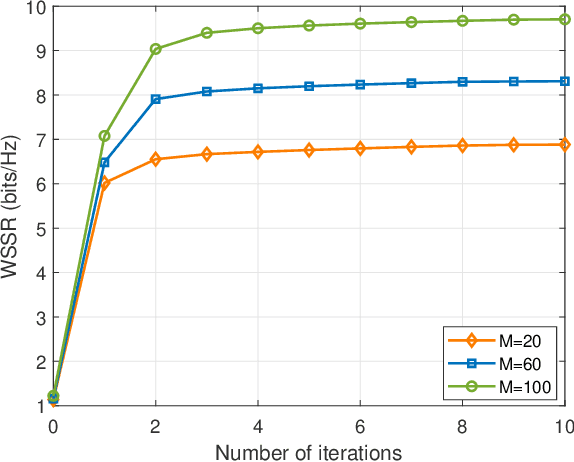
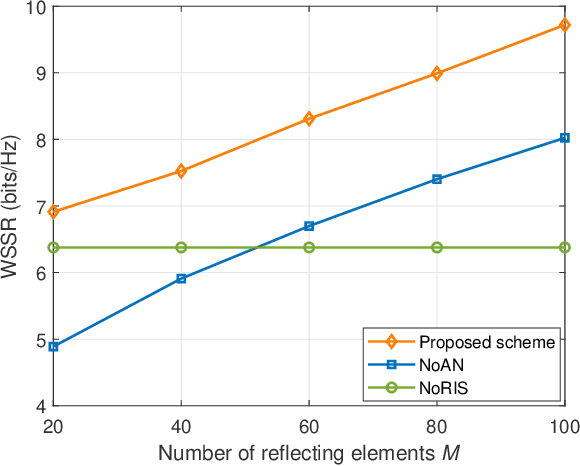
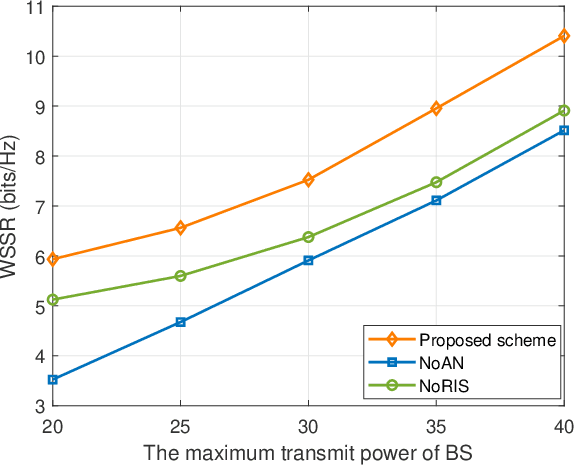
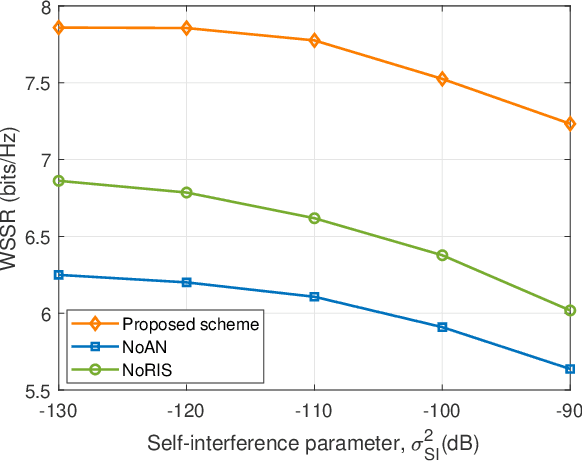
Abstract:This letter considers the secure communication in a reconfigurable intelligent surface (RIS) aided full duplex (FD) system. A FD base station (BS) serves an uplink (UL) user and a downlink (DL) user simultaneously over the same timefrequency dimension assisted by a RIS in the presence of an eavesdropper. In addition, the BS transmits artificial noise (AN) to interfere the eavesdropper's channel. We aim to maximize the weighted sum secrecy rate of UL and DL users by jointly optimizing the transmit beamforming, receive beamforming and AN covariance matrix at the BS, and passive beamforming at the RIS. To handle the non-convex problem, we decompose it into tractable subproblems and propose an efficient algorithm based on alternating optimization framework. Specifically, the receive beamforming is derived as a closed-form solution while other variables are obtained by using semidefinite relaxation (SDR) method and successive convex approximation (SCA) algorithm. Simulation results demonstrate the superior performance of our proposed scheme compared to other baseline schemes.
Reconfigurable Intelligent Surfaces for Energy Efficiency in Full-duplex Communication System
May 24, 2022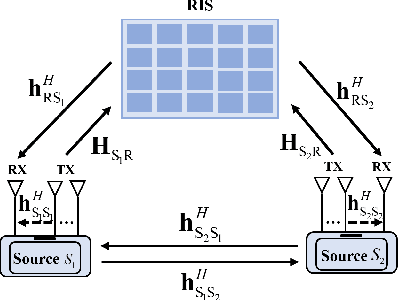
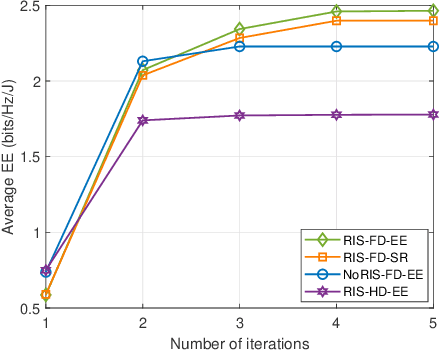
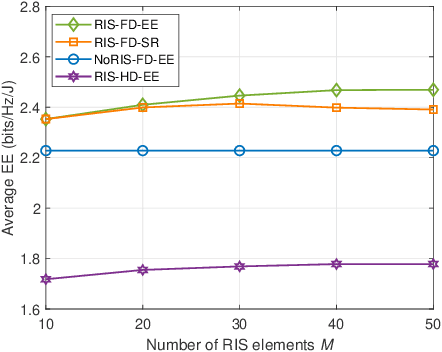
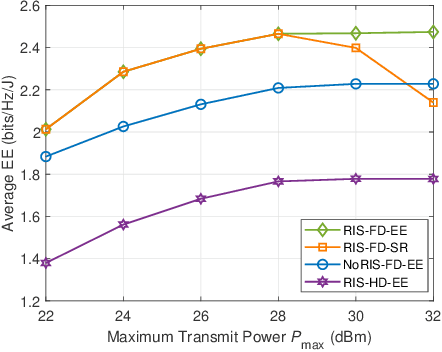
Abstract:In this letter, we study the reconfigurable intelligent surfaces (RIS) aided full-duplex (FD) communication system. By jointly designing the active beamforming of two multi-antenna sources and passive beamforming of RIS, we aim to maximize the energy efficiency of the system, where extra self-interference cancellation power consumption in FD system is also considered. We divide the optimization problem into active and passive beamforming design subproblems, and adopt the alternative optimization framework to solve them iteratively. Dinkelbach's method is used to tackle the fractional objective function in active beamforming problem. Penalty method and successive convex approximation are exploited for passive beamforming design. Simulation results show the energy efficiency of our scheme outperforms other benchmarks.
Energy Efficiency Maximization of Simultaneous Transmission and Reflection RIS Assisted Full-Duplex Communications
Mar 14, 2022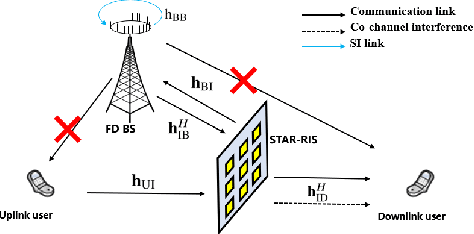
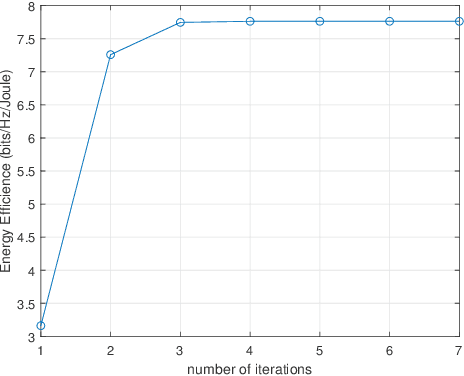
Abstract:This work studies the effectiveness of a novel simultaneous transmission and reflection reconfigurable intelligent surface (STAR-RIS) aided Full-Duplex (FD) communication system. We aim to maximize the energy efficiency by jointly optimizing the transmit power and passive beamforming at the STAR-RIS. We propose an efficient algorithm to optimize them iteratively under the alternating optimization framework. The successive convex approximation (SCA) and Dinkelbach's method are used to solve the power optimization subproblem. The penalty-based method is used to design passive beamforming at the STAR-RIS. Numerical results verify the convergence and effectiveness of the proposed algorithm, and further reveal the benifits of the combining of the STAR-RIS and FD communication compared to benchmarks.
Simultaneous Transmission and Reflection Reconfigurable Intelligent Surface Assisted Full-Duplex Communications
Mar 12, 2022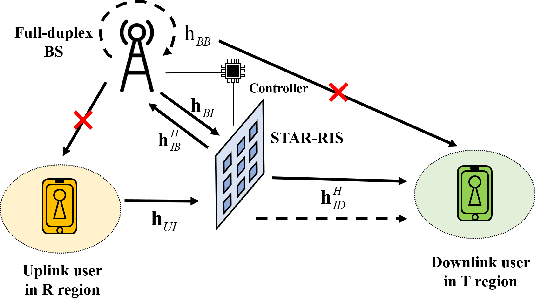
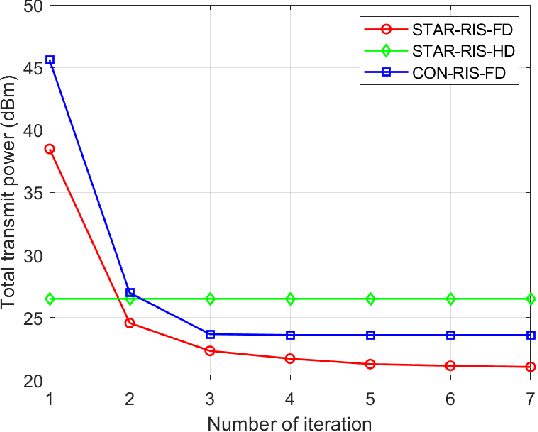
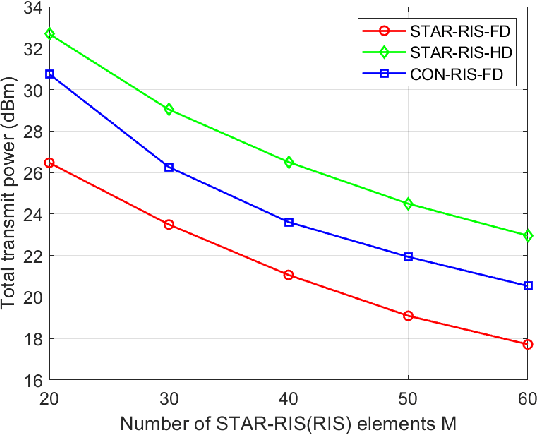
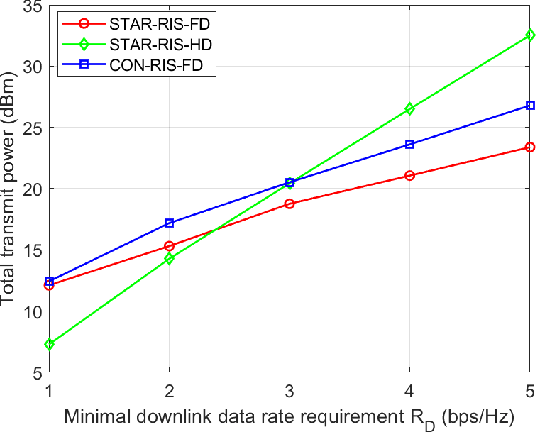
Abstract:This work demonstrates the effectiveness of a novel simultaneous transmission and reflection reconfigurable intelligent surface (STAR-RIS) in Full-Duplex (FD) aided communication system. The objective is to minimize the total transmit power by jointly designing the transmit power and the transmitting and reflecting (T&R) coefficients of the STAR-RIS. To solve the nonconvex problem, an efficient algorithm is proposed by utilizing the alternating optimization framework to iteratively optimize variables. Specifically, in each iteration, we drive the closed-form expression for the optimal power design. The successive convex approximation (SCA) method and semidefinite program (SDP) are used to solve the passive beamforming optimization problem. Numerical results verify the convergence and effectiveness of the proposed algorithm, and further reveal in which scenarios STAR-RIS assisted FD communication defeats the Half-Duplex and conventional RIS.
Performance Analysis and Codebook Design for mmWave Beamforming System with Beam Squint
Jan 18, 2021

Abstract:Beamforming technology is widely used in millimeter wave systems to combat path losses, and beamformers are usually selected from a predefined codebook. Unfortunately, traditional codebook design neglects the beam squint effect, and this will cause severe performance degradation when the bandwidth is large. In this letter, we consider that a codebook with fixed size is adopted in the wideband beamforming system. First, based on the rectangular beams with conventional beam coverage, we analyze how beam squint affects system performance and derive the expression of average spectrum efficiency. Next, we formulate optimization problem to design the optimal codebook. Simulation results demonstrate that the proposed codebook spreads beam coverage to cope with beam squint and significantly slows down the performance degradation.
 Add to Chrome
Add to Chrome Add to Firefox
Add to Firefox Add to Edge
Add to Edge